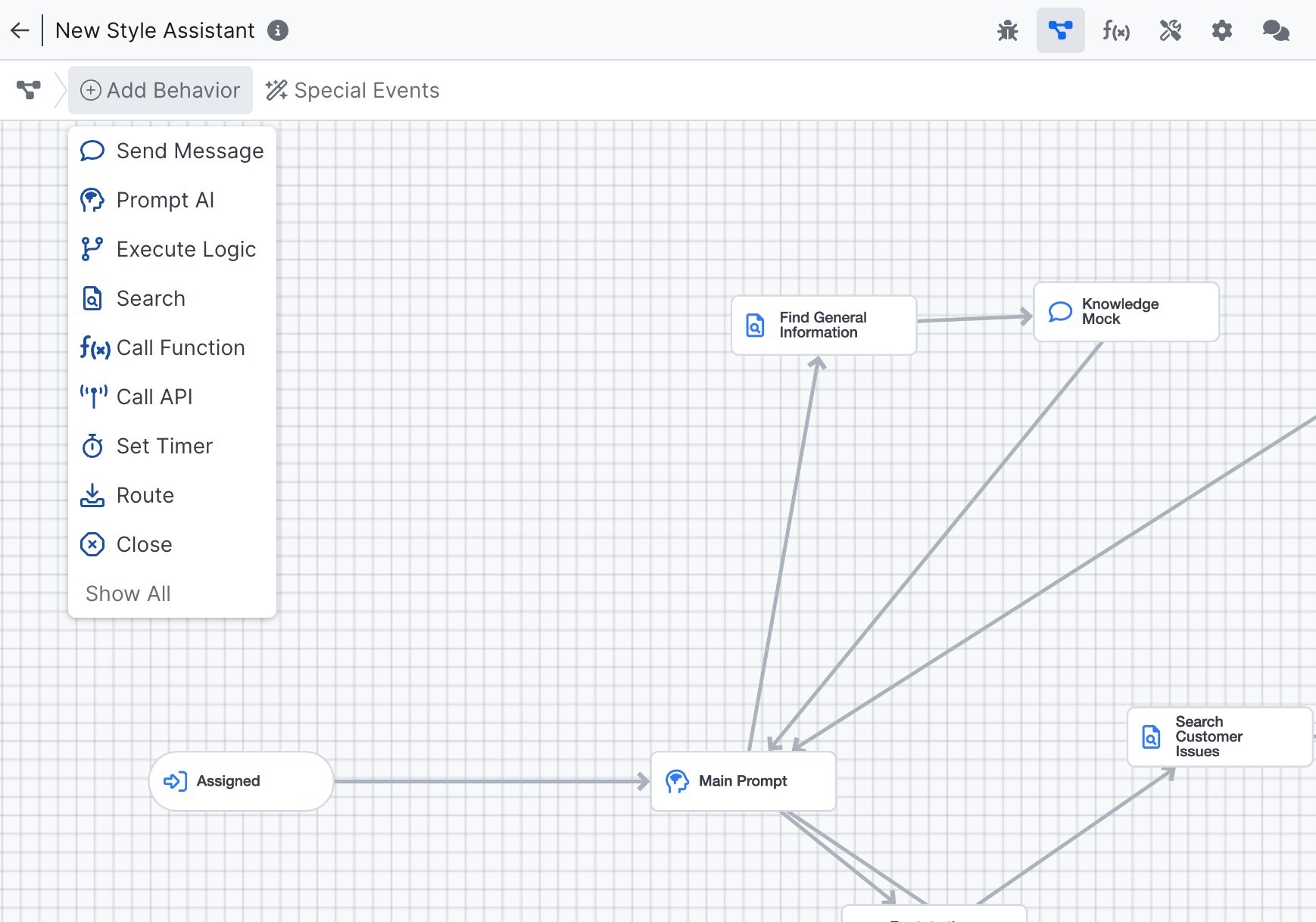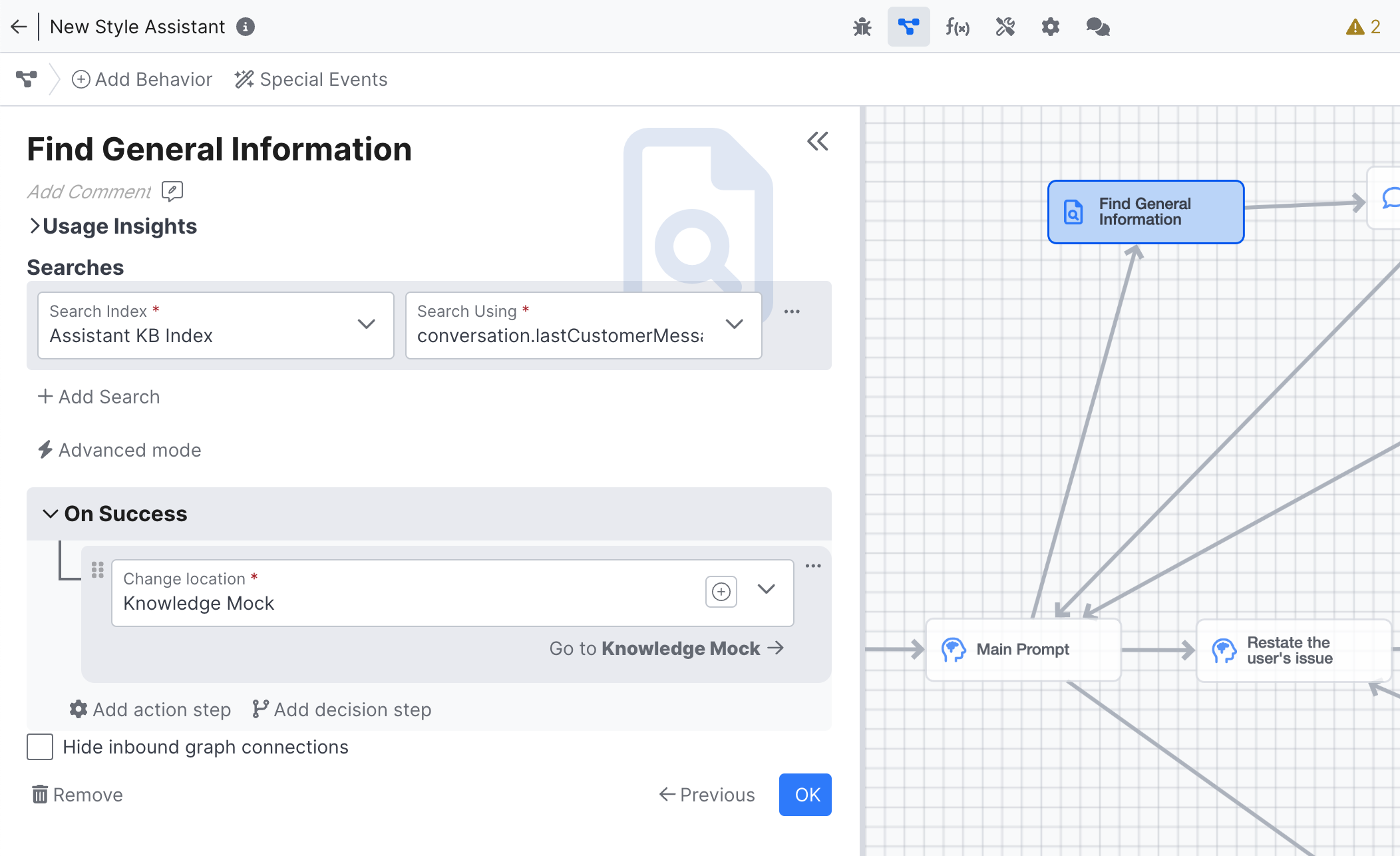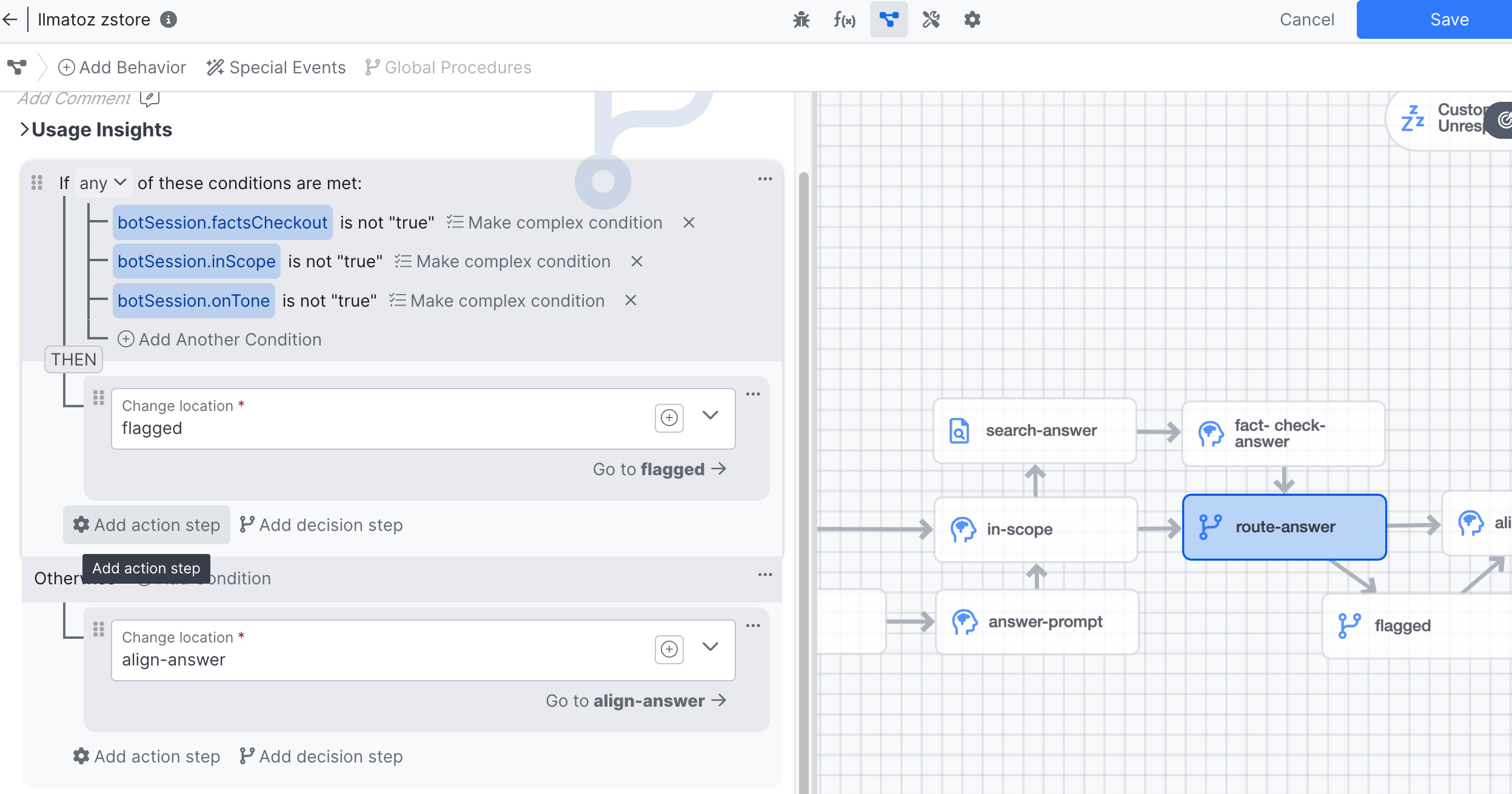Flow Editor
Overview
The Flow Editor serves as the main entry point to building and visualizing your agent. An agent's flow defines its behavior while it executes. A Flow is a graph of interconnected Behaviors and Actions that execute against the agent's Context.

Preparing to add a Prompt AI Behavior to the flow with no other panels open
Behaviors
Behaviors (sometimes called nodes) represent major steps in your agent's flow execution and are rendered in the top-level flow graph. Double-clicking a behavior results in its configuration flyout appearing from the left:

Configuring a Search Behavior
Common Behaviors
The following behavior types are common across all types of agents and represent the fundamental building blocks of AI automation:
| Behavior | Description |
|---|---|
| Execute Logic | Author visual rules & logic and control the flow execution |
| Search | Search AI resources |
| Prompt AI | Prompt AI based on the context and translate the LLM completion into actions |
| Call API | Call an API to retrieve or modify data in external systems |
| Call Function | Call a function to derive actions from the context |
See the full documentation of core behavior types
Customer Agent Behaviors
Customer Agents have additional behaviors:
| Behavior | Description |
|---|---|
| Assigned | Special behavior that executes when a conversation is first assigned to the agent |
| Send Message | Send a message to the customer and optionally wait for a response |
| Set Timer | Set a timer that will fire if no customer response is received |
| Route | Route the conversation to another agent or a live agent queue |
| Close | Close the conversation |
See the full documentation
Actions
Behaviors execute Actions. Actions are therefore lower-level and not visible in the top-level flow graph. They are, however, very important to the agent's execution as they are used to move between behaviors and trigger important side effects like setting fields and sending messages.
The Flow Editor is used to visually configure actions, but some actions can also be generated programmatically by Functions and API Calls.

Preparing to add another action in an Execute Logic behavior
Common Actions
The following actions are used to build any type of agent:
| Core Action | Description |
|---|---|
| Change Location | Change location to another behavior in the flow |
| Set a Field | Set a field to a value |
| Unset a Field | Unset a field |
| Add to a Field | Increment a counter |
| Set a Buffer | Store state in an opaque buffer |
Change Location is particularly important because it controls the flow. Change location actions are visualized as edges in the flow graph. See the full reference for more information on core actions.
Customer Agent Actions
Customer agents utilize additional actions to interact directly with customers. Here are some of the most important customer agent actions:
| Customer Agent Action | Description |
|---|---|
| Send a Message | Send a message including full rich-messaging support |
| Set a Catalog Message | Send a message from the Message Catalog |
| Start Typing Indicator | Display a typing indicator to customers on supported platforms |
See the full reference for more information.
Context
An agent's Context is a less visible but nonetheless critical aspect of flow execution. The context contains all the data (i.e. state) that the agent executes against. Behaviors and actions modify the context as they execute.
Any decisions or actions configured in the Flow Editor are evaluated against the context. Similarly, the context is a primary input to functions in the Function Editor, such as prompt building functions that translate the context into prompts to send to an LLM.
The shape of the context varies based on the type of agent. But all agent contexts include the following data:
- Search results - Accumulated by Search behaviors during the current flow execution
- API results - Accumulated by Call API behaviors during the current flow execution
- Session field state - The state of session fields that can be checked and set by visual and programmatic actions
- Buffer state - Opaque buffer state used by Functions
Additionally, the context will also include the primary data model that the agent operates against. In the case of customer agents this includes the full conversation record.
More information:
Customer Assistant Context Overview
CustomerAssistantContext Reference Documentation
Updated about 1 month ago